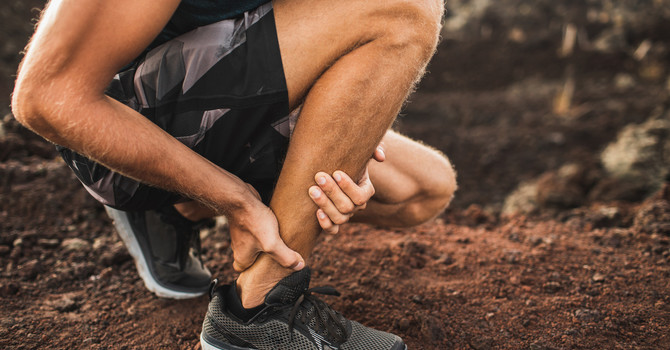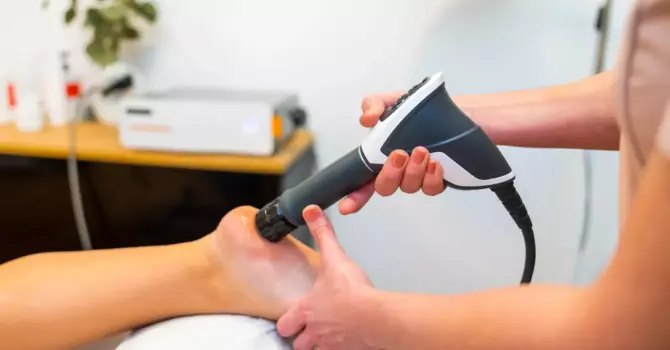
Mobility vs. Flexibility: What's the Difference and Why it Matters
Many people use the terms "mobility" and "flexibility" interchangeably, but they refer to distinct aspects of movement. While both are essential for physical function, athletic performance, and injury prevention, they denote distinct movement qualities.
Understanding the distinction can help you train more effectively, feel better in your body, and maintain long-term joint health.
Defining the Terms: Mobility vs. Flexibility
What is flexibility?
Flexibility refers to the ability of a muscle or muscle group to lengthen passively through a range of motion.
For example:
- You are testing your passive flexibility when you perform a hamstring stretch and hold it for a specific period.
Muscle length, connective tissue properties, and nervous system tone influence flexibility.
What is mobility?
Mobility refers to the ability of a joint to move actively through its full range of motion under control.
For example:
- A deep squat requires mobility in the ankles, knees, hips, and spine—not just flexibility.
Mobility includes flexibility plus strength, motor control, and joint health.
Why the Difference Matters
Many people concentrate only on stretching, believing it will resolve movement issues. However, if a joint can move passively—but not actively, this indicates a mobility limitation. Such limitations are often caused by problems with motor control, stability, or soft tissue restrictions rather than muscle tightness.
Focusing on the right issues—improving mobility when necessary and flexibility when appropriate—leads to better results, fewer injuries, and enhanced performance.
How Mobility and Flexibility Work Together
Think of flexibility as the raw potential and mobility as the functional use of that potential.
A gymnast may have the flexibility to do splits, but mobility allows them to dynamically control their legs into and out of those positions during performance.
Conversely, someone with hyper-flexibility but poor mobility may be at higher risk of joint injury because they can't stabilize their joints during movement.
Key takeaway:
- Flexibility without strength and control is incomplete.
- Mobility integrates flexibility with function.
Common Signs of Poor Mobility
You don't need to be an athlete to notice mobility limitations. Here are some red flags:
- Difficulty squatting or lunging without your heels lifting
- Trouble reaching overhead without arching your back
- Pain or pinching during certain movements
- Joint stiffness in the morning or after sitting
- Needing to "warm up" excessively before activity
These often indicate restricted joint motion, tight surrounding tissues, or poor neuromuscular control.
Joint-by-Joint Approach to Mobility and Stability
The joint-by-joint approach, developed by strength coach Mike Boyle and physical therapist Gray Cook, is a practical method for understanding how the body moves and where movement tends to go wrong. The approach suggests that the body comprises a series of joints that alternate in their primary need: mobility or stability.
What is Stability?
Stability refers to a joint's ability to resist unwanted movement and maintain proper alignment under stress. Stable joints provide a strong foundation, allowing mobile joints to move freely without compensation.
Stability depends on:
- Motor control (how well your nervous system coordinates movement)
- Ligament integrity
- Muscular strength and endurance
- Core activation and postural support
When a joint lacks stability, the body often compensates by restricting motion in the surrounding mobile joints or excessively moving elsewhere, which may lead to pain, overload, and injury.
Alternating Needs
Some joints require more mobility, while others prioritize stability. The joint-by-joint approach helps guide where to focus:
- Ankle: mobility - A stiff ankle limits squatting, walking, and running mechanics
- Knee: stability - Needs to remain centered and controlled to avoid valgus (collapsing) stress
- Hip: mobility - Tight hips lead to compensations in the lower back or knees
- Lumbar spine: stability - Excessive motion can contribute to low back pain
- Thoracic spine: mobility - A mobile upper back supports posture and overhead movement
- Scapulothoracic articulation (shoulder blade): stability - Helps anchor shoulder movement and prevent impingement
- Glenohumeral Joint (shoulder): mobility - Allows functional overhead pushing and pulling movements
- Elbow: stability - Acts as a hinge; excessive motion can stress tendons
- Wrist: mobility - Needed for grip, lifting, and load distribution
How the Model Applies in Practice
When one joint fails to perform its function, the body compensates by asking other joints to take up the slack. This compensation often leads to predictable injury patterns:
- Limited ankle mobility can cause the knee to collapse inward during a squat, stressing the ligaments and leading to knee pain.
- Poor thoracic mobility may lead to excessive movement in the lumbar spine, increasing the risk of low back pain.
- A lack of hip mobility can lead to overuse of the knees or lumbar spine during walking, lifting, or athletic movements.
By understanding which joints are supposed to be mobile and which are supposed to be stable, we can create a targeted plan to restore balance and improve movement efficiency.
How to Improve Mobility
Improving mobility involves more than just static stretching. Here are the most effective strategies:
1. Dynamic Stretching
Exercises that move joints through their entire range of motion are commonly incorporated into warm-up routines.
Examples: Leg swings, arm circles, deep lunges with rotation
2. Joint Mobilization
Targeted movements or manual therapy designed to improve specific joint mechanics.
Best done with: A chiropractor, physical therapist, or skilled practitioner.
3. Eccentric Strengthening
Strengthening a muscle while it lengthens helps improve active range of motion.
Examples: Slow, deep squats, Romanian deadlifts, deep lunge variations
4. Soft Tissue Work
Techniques like myofascial release, dry needling, or cupping can help reduce restrictions and improve tissue quality.
Tip: Always follow soft tissue work with active movement to lock in the gains.
5. Controlled Articular Rotations (CARs)
Slow, deliberate joint circles that train end-range control and build neuromuscular awareness.
Why it works: Encourages strength and control at the limits of your mobility.
When to Focus on Flexibility
Flexibility is still valuable, especially when:
- A muscle is truly short (e.g., post-injury or prolonged immobilization)
- There's an asymmetry between the left and right side
- You need to reduce neural tension
- You're working on relaxation and parasympathetic tone
Static stretching can be helpful post-workout or incorporated into yin yoga practice for deeper fascial release and nervous system regulation.
Do You Need Both?
Yes—but the emphasis depends on your goals and current limitations.
- Athletes and active adults usually benefit more from mobility-focused training.
- Sedentary individuals may need to restore baseline flexibility before building mobility.
- Aging adults need both to maintain their functional independence and reduce the risk of injury.
Mobility and Chiropractic Care
At Arthrology Chiropractic, mobility is more than a buzzword—it's a central part of helping patients move and feel better.
How we support your mobility:
- Joint manipulation and mobilization to restore proper joint mechanics
- Soft tissue therapies to reduce restrictions
- Corrective exercises tailored to your body and goals
- Education on how to build and maintain mobility for life
Final Thoughts
Mobility and flexibility are vital to health, performance, and injury prevention, but they are not the same. Knowing the difference empowers you to train smarter and take better care of your body.
Flexibility gives you the range.
Mobility gives you the control.
Want to explore how mobility is affecting your pain or performance? At Arthrology Chiropractic, we take a comprehensive approach to movement, recovery, and long-term joint health.

Edward Boudreau
Contact Me



.png)
